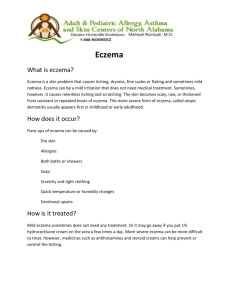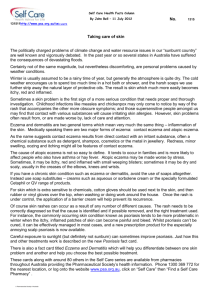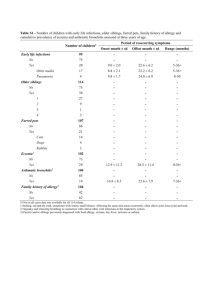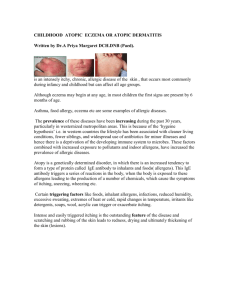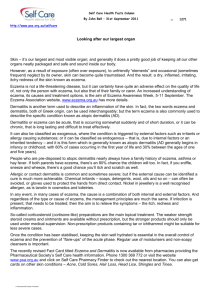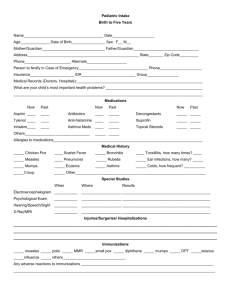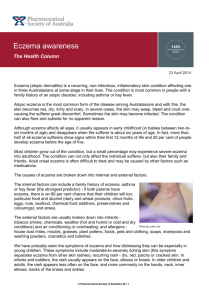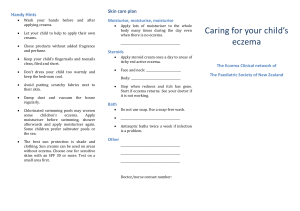ECZEMA - Acaai
advertisement
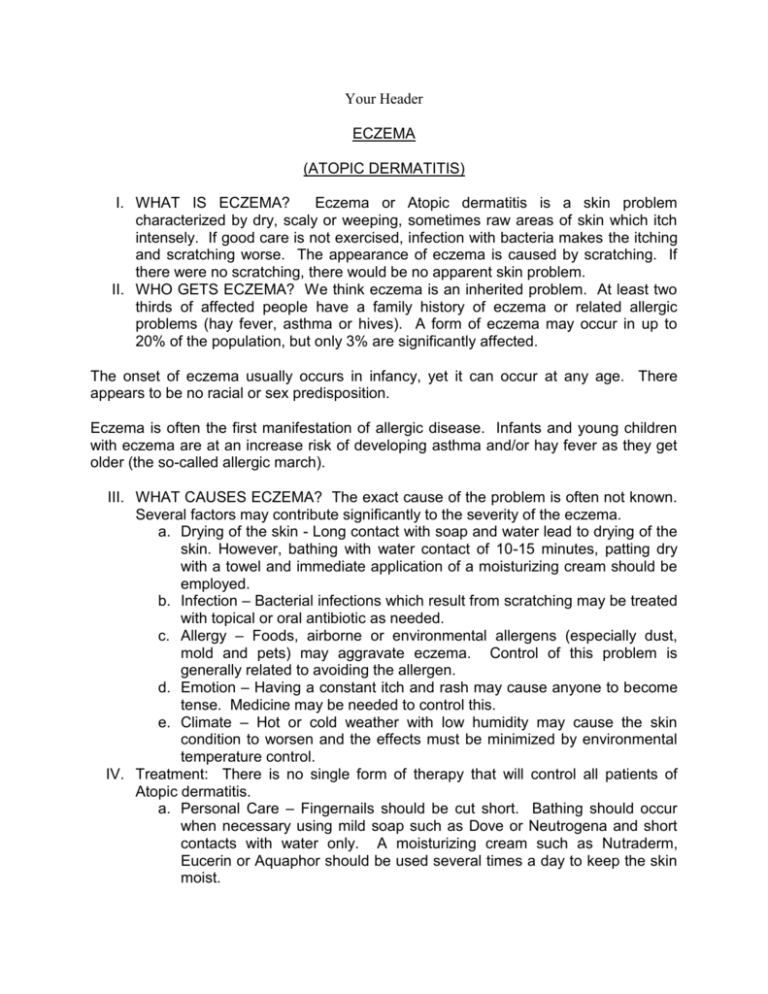
Your Header ECZEMA (ATOPIC DERMATITIS) I. WHAT IS ECZEMA? Eczema or Atopic dermatitis is a skin problem characterized by dry, scaly or weeping, sometimes raw areas of skin which itch intensely. If good care is not exercised, infection with bacteria makes the itching and scratching worse. The appearance of eczema is caused by scratching. If there were no scratching, there would be no apparent skin problem. II. WHO GETS ECZEMA? We think eczema is an inherited problem. At least two thirds of affected people have a family history of eczema or related allergic problems (hay fever, asthma or hives). A form of eczema may occur in up to 20% of the population, but only 3% are significantly affected. The onset of eczema usually occurs in infancy, yet it can occur at any age. There appears to be no racial or sex predisposition. Eczema is often the first manifestation of allergic disease. Infants and young children with eczema are at an increase risk of developing asthma and/or hay fever as they get older (the so-called allergic march). III. WHAT CAUSES ECZEMA? The exact cause of the problem is often not known. Several factors may contribute significantly to the severity of the eczema. a. Drying of the skin - Long contact with soap and water lead to drying of the skin. However, bathing with water contact of 10-15 minutes, patting dry with a towel and immediate application of a moisturizing cream should be employed. b. Infection – Bacterial infections which result from scratching may be treated with topical or oral antibiotic as needed. c. Allergy – Foods, airborne or environmental allergens (especially dust, mold and pets) may aggravate eczema. Control of this problem is generally related to avoiding the allergen. d. Emotion – Having a constant itch and rash may cause anyone to become tense. Medicine may be needed to control this. e. Climate – Hot or cold weather with low humidity may cause the skin condition to worsen and the effects must be minimized by environmental temperature control. IV. Treatment: There is no single form of therapy that will control all patients of Atopic dermatitis. a. Personal Care – Fingernails should be cut short. Bathing should occur when necessary using mild soap such as Dove or Neutrogena and short contacts with water only. A moisturizing cream such as Nutraderm, Eucerin or Aquaphor should be used several times a day to keep the skin moist. b. Antipruritics (Anti-Itch) – The itching may be additionally controlled with an antihistamine given orally, especially prior to bed. c. Topical preparations – Topical cortisone creams or ointments may be used to calm flairs of the condition. Milder creams are preferred when possible for control, especially on the facial areas. d. Diet – In some patients dietary therapy may represent a major advance in management. e. Dress – Clothing should be soft and not restrictive. Wool and abrasive fabrics should not be chosen. Long sleeves and trousers may cause excessive sweating. Natural fibers like cotton allow perspiration to be evaporated more easily than synthetic fibers. f. Avoid direct exposure to harsh cleaning chemicals, dyes and fragrances in laundry and toiletry products. Fabric softeners should be avoided.
